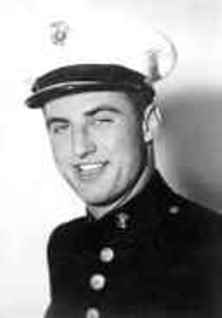GZIK-RICHARD
RICHARD STANLEY GZIK

PFC

Sept. 25, 2012
MARINE MISSING IN ACTION FROM KOREAN WAR IDENTIFIED
The Department of Defense POW/Missing Personnel Office (DPMO) announced today that the remains of a U.S. serviceman, missing in action from the Korean War, have beenidentified and will be returned to his family for burial with full military honors.
Marine Pfc. Richard S. Gzik, 19, of Toledo, Ohio, will be buried Sept. 28, at ArlingtonNational Cemetery near Washington, D.C. On Dec. 2, 1950, Gzik and the other Marines of M Battery, 11th Artillery Regiment, 1st Marine Division, came under attack on the west side of the Chosin Reservoir in North Korea. It was during this battle that Gzik was killed in action and his remains were buried alongside the road leading to Hagaru-ri. Later that month, the withdrawal of U.N. forces from the Chosin Reservoir region made it impossible to recover Gzik’s remains.
In 1954, United Nations and Communist Forces exchanged the remains of war dead inwhat came to be called “Operation Glory.” All remains recovered in Operation Glory wereturned over to the Army Central Identification Unit for analysis. Those which were unable to be identified, given the technology of that time, were interred as unknowns at the National Memorial Cemetery of the Pacific in Hawaii—the “Punchbowl.”
In 2012, analysts from the Joint POW/MIA Accounting Command (JPAC) re-examinedthe case records and determined that advances in technology could likely aid in the Identificationof the unknown remains as Gzik. Once the remains were exhumed, scientists from JPAC used circumstantial evidence and forensic identification tools, including dental records and radiographs, to validate Gzik’s identification. Using modern technology, identifications continue to be made from remains that werepreviously buried as unknown. Today, 7,947 Americans remain unaccounted for from the KoreanWar.
For additional information on the Defense Department’s mission to account for missing Americans, visit the DPMO web site at http://www.dtic.mil/dpmo or call (703) 699-1169.
-end

